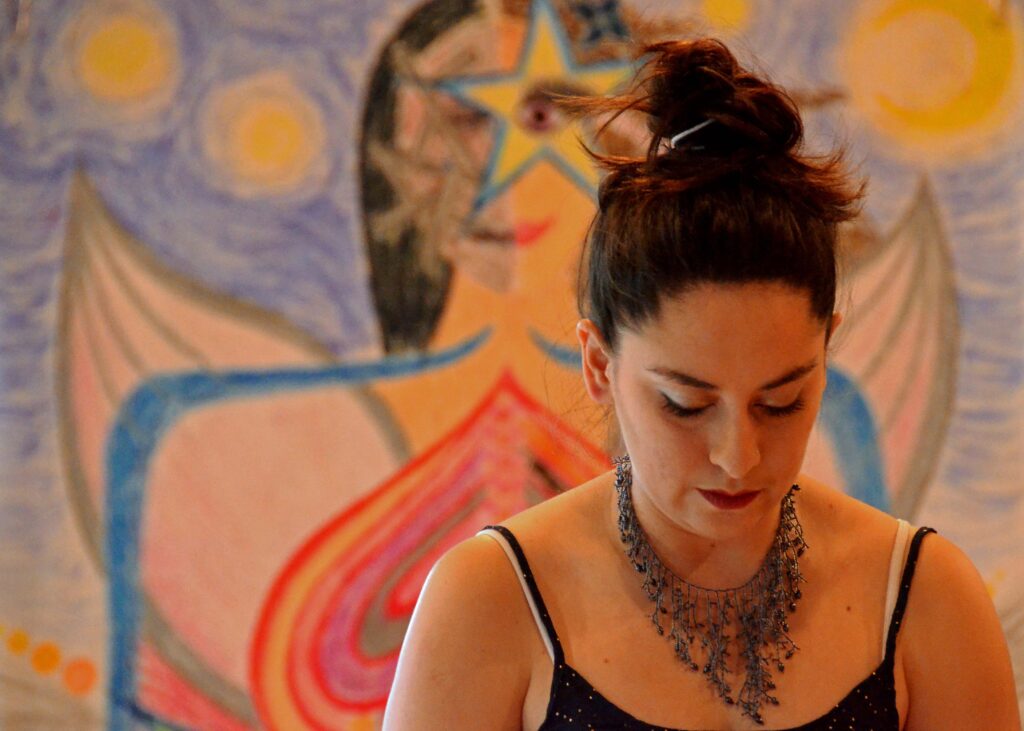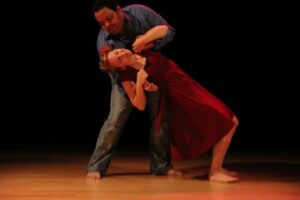Listening to Grief Metaphors through the Arts

“I measure every grief I meet
With analytic eyes;
I wonder if it weighs like mine,
Or has an easier size.”
-Emily Dickinson
Over the last several years I have been learning about grief through the language of the arts. This is a language that doesn’t require learning a pattern of speech but instead demands close listening and attention. As I have been listening, I have discovered the following about grief. First and foremost, grief is heavy, and the bigger the loss, the heavier the weight. Grief may be quiet, so quiet that it can be hard to hear. Grief can be loud, angry and deafening, thrashing around baring its teeth. When complicated, grief is very sticky, burdening a person with memories that cannot be shaken off or expelled no matter how sincere the effort. Grief is often lonely, leaving one in a room that is so expansive that it is hard to be reached. English writer Helen MacDonald in her book H is for Hawk poignantly describes the disorientation of grief after the loss of her father, “Planes still landed, cars still drove, people still shopped and talked and worked. None of these things made sense at all. For weeks I felt I was made of dully burning metal.” These images help me understand the desolation that comes with loss.
As I listen even closer and bring acceptance to the grieving process (my own and others), I find a great tenderness in grief, and witness how the heart can open more than ever before. Grief can be sacred, giving space for slowing down and landing in suspended time. Grief is discerning, clearing out what is unnecessary and superficial. This discernment can bring a stronger sense of purpose and a closer connection with others. Grief can draw one to the constant wonder of nature, taking in the beauty that resides there. Grief can be a force for change, exposing a more expanded sense of self. In grief we can see clearly the temporary nature of things, and act with less fear and more conviction.
While inquiring into the various responses to grief, it has been affirmed to me that the arts can help lighten the load. Art can hold any amount of weight, express emotions through song, paint, poetry and tell or dance a story with a pure voice. Shakespeare appeals to us as someone who knew grief intimately, “Give sorrow words. The grief that does not speak Whispers o’er the fraught heart and bids it break.” Creative expression can allow the opportunity to release the weight if only for a short time, which can give more space for life, and what surrounds us. I am well-versed in the ‘linguistics’ of the arts with a creative career built around teaching and guiding people through an arts process. When I suffered several significant losses of my own, and was gripped with emptiness and pain, I was frustrated at the outset that I could not find the energy to express myself creatively, knowing full well the potency of this kind of release.
During a discussion with a close mentor of mine, he suggested that it was time to let art hold me. What if I could surrender to the exhaustion and be receptive, watch movies, listen to music, read books and poetry that stirred me? Essentially, the idea was to find creative nourishment that could soothe my broken heart. If you have gone through a painful loss, you might have noticed in the midst of the upheaval that a vast majority of films, books and fine art are inspired by death or loss in some form. Life is always mirroring death, and when art is created from an emotional and honest place, loss is often in the background. The good news in the midst of bad news is that loss offers us a pathway for renewal if we can be in the discomfort long enough to pass through the portal. Two aspects have been instrumental in my recovery from grief, one was to linger in the desert landscape of grief for a while, and when ready, find the courage to express my grief story.
Part of my work as teacher and mentor involves dance and movement, giving the opportunity for people to tell stories through the work of the Life/Art process (developed at internationally renowned Tamalpa Institute). Dance through the Life/Art Process does not require an agile body and choreographic talent, but instead asks one to be vulnerable and present to the movement that wants to speak, essentially an improvisation of the soul. In this movement ‘therapy’, we listen to the metaphors that arise for us in connection with life themes and we find a way to dance them. The body is the holder of our emotions, our memories and our history. If we dance and let the body speak, we are often able to ‘move’ things out, listen more deeply to our insides, and find access to our life force. As I listened to the grief qualities and metaphors (heavy, sticky, loud, thrashing, dull…), I became very curious about the dances that could be expressed when one experiences the emotions of grief and tells the stories of loss. Ron Marasco and Brian Shuff give us this image in their book About Grief, “Grief can feel like hanging over a precipice-the level of emotional vulnerability is that intense.” What emerged for me in response to my own grief story was the metaphor of ‘falling’. The images of fallin g are so visceral and evoke so many clear movements: falling down, falling into someone’s arms, falling and having someone catch you, falling and not getting back up; as well as associations such as falling without a safety net, falling into a rabbit hole and the literal fear of falling. So, I explored falling using dance, poetry and film with many supportive people, many of them artists, who created a team that helped me fall over and over again. In this act of falling, I found soft landings, I felt strong emotions and new insights arose. To my surprise, I also had fun. If you aren’t already versed in the language of the arts, it is important to understand that art making is fun. When we are encountering the pain of grief over a long period of time, we need to have opportunities to play and lighten up. It is simply common sense in order to survive and stay afloat.
g are so visceral and evoke so many clear movements: falling down, falling into someone’s arms, falling and having someone catch you, falling and not getting back up; as well as associations such as falling without a safety net, falling into a rabbit hole and the literal fear of falling. So, I explored falling using dance, poetry and film with many supportive people, many of them artists, who created a team that helped me fall over and over again. In this act of falling, I found soft landings, I felt strong emotions and new insights arose. To my surprise, I also had fun. If you aren’t already versed in the language of the arts, it is important to understand that art making is fun. When we are encountering the pain of grief over a long period of time, we need to have opportunities to play and lighten up. It is simply common sense in order to survive and stay afloat.
I come to the arts with a strong vocabulary, having a creative map to guide me. The lack of artistic experience might feel like a challenge if expression is desired. Where to begin? How might one tell their grief story if they are not versed in the language of the arts? Like any learning, it is best to start simple. I have suggested that clients and students write intimate poetry, or draw in a journal that serve as a visual diary a few times a week. Taking an art class can give opportunities to dance, paint, sing or perform the story, if possible with a teacher that encourages truth telling and provides a safe space for vulnerability. The most basic prescription is to find the metaphor that fits your particular brand of grief. How does the grief feel in your body, and what movements or images does that feeling evoke? If you imagine you are filled with heavy stones, then the antidote in creative terms is to lighten up. With movement you can take deep breaths and create more space in your ribcage, lift your arms slowly, pretend your arms are filled with air and float. Another strong metaphor that arises in the land of grief is the flood; you can find yourself in deep waters when the waves of grief keep coming. Finding places to shore up and rest, and creating a symbolic life raft for these times can make a huge difference. This might be a grief counselor or a grief group, and it can also be music that lifts you up, or your favorite comedy show.
The physical exhaustion and depression that occur after the loss of a loved one or a significant life change (divorce, loss of job, miscarriage, etc.) can be acute, keeping one frozen in time and inert for months to years. It is important to remember that we are built for loss as it is an inevitable part of life, and that movement and action can change how we feel. American writer and philosopher Elbert Hubbard speaks to this in his famous quote, ‘the cure for grief is motion’. The arts are an ancient language, primal and accessible to us all. We can take art in, or let expression out. If you find yourself hanging from a ledge or in deep water, may art be with you.
…
Adriana Marchione is an arts and movement educator/therapist who is a trusted creative guide. She is well-versed in helping people use the arts to recover from difficult life issues including addiction, trauma and grief. She has recently released her film, ‘When the Fall Comes’ which shares her personal story exploring love, loss and art inspired by the losses of her husband and her father. On January 23 and 24, 2016 she will offer a grief and arts workshop with co-facilitator and musician Steve Podry at the Joe Goode Annex in San Francisco. Find her at www.adrianamarchione.com and whenthefallcomes.com
Photographs by Bridget Koehler of Gloria Rubio at Tamalpa Institute, and Dietmar Brinkmann from the performance of When the Fall Comes.
Self-Published, January 2016